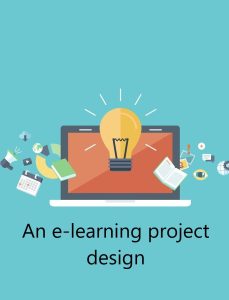Design and Development

Scope of E-learning for Truck Patch Customer Service
The e-learning course for Truck Patch Customer Service aims to provide comprehensive training that enhances the skills and knowledge of employees, ensuring they deliver exceptional customer service. The course is designed to be engaging, interactive, and accessible, catering to new hires as well as existing employees who need a refresher or advanced training.
Design and Development Components
1. Course Objectives and Outcomes
- Clearly defined learning objectives that align with the overall goal of improving customer service.
- Specific outcomes that participants should achieve by the end of the course, such as mastering communication skills, understanding product knowledge, and applying standard service procedures.
2. Content Development
- Introduction Module: Overview of Truck Patch’s mission, values, and the importance of customer service.
- Customer Service Basics: Fundamental principles of customer service, including active listening, empathy, and effective communication.
- Product Knowledge: Detailed information about Truck Patch’s products, enabling employees to answer customer inquiries confidently.
- Service Procedures: Standardized procedures for handling various customer service scenarios, including returns, complaints, and product recommendations.
- Interactive Scenarios: Real-life scenarios and role-playing exercises to practice handling customer interactions.
- Cultural Competency: Training on diversity and inclusion to ensure all customers feel respected and valued.
3. Instructional Strategies
- Multimedia Content: Use of videos, animations, and infographics to present information in an engaging and easily digestible format.
- Interactive Activities: Quizzes, drag-and-drop exercises, and simulations to reinforce learning and ensure active participation.
- Gamification: Incorporation of game-like elements such as badges, points, and leaderboards to motivate and engage learners.
- Microlearning Modules: Short, focused modules that learners can complete at their own pace, making the training flexible and manageable.
4. Assessment and Evaluation
- Pre-Training Assessment: Baseline assessment to gauge initial knowledge and skills.
- Formative Assessments: Quizzes and knowledge checks throughout the course to provide immediate feedback and reinforce learning.
- Summative Assessment: Comprehensive final assessment to evaluate overall knowledge and skills gained.
- Behavioral Observations: Post-training evaluations to observe the application of skills in real work settings.
- Feedback Mechanisms: Surveys and feedback forms to gather participants’ input on the training experience and its effectiveness.
5. Technical Requirements and Accessibility
- Platform Compatibility: Ensure the course is compatible with various devices and platforms, including desktops, tablets, and smartphones.
- User-Friendly Interface: Intuitive navigation and user-friendly design to enhance the learning experience.
- Accessibility: Compliance with accessibility standards (e.g., WCAG) to accommodate learners with disabilities.
6. Implementation and Support
- Pilot Testing: Initial rollout with a small group of users to identify any issues and gather feedback for improvements.
- Instructor and Learner Support: Provide resources and support for both instructors and learners, including FAQs, help desks, and technical assistance.
- Continuous Improvement: Ongoing updates and revisions based on feedback and changing needs to ensure the course remains relevant and effective.
By encompassing these design and development components, the Truck Patch Customer Service e-learning course aims to create a robust and effective training program that enhances customer service skills, standardizes procedures, and ultimately improves customer satisfaction.
Included in this brief portfolio are the:
- Analysis: E-learning Proposal
- Design: Storyboard
- Development: Work Plan
- Implementation: Working Proof
- Evaluation: Evaluation Plan
